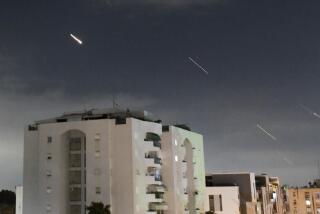Reality tribes’ trash survives
A pile of long wooden planks stood next to an 11-foot-high plate of dirty glass. Nearby, a beat-up bench didn’t look as though it could support a toddler without collapsing. A crude wooden chair on tall legs leaned against a tree. Ropes were everywhere. And torches were scattered about like giant matchsticks.
Atop the highest point of Isla Contadora, the debris ruins one of the better views of the Pearl Islands. Located off the Pacific coast of Panama, the Pearl Islands are a string of 190 gems rimmed by powder-white sand and turquoise water and filled with jungle.
“ ‘Survivor’ shows are notorious,” said Scott Van Pelt, the Texas-raised manager of Contadora’s Perla Real Inn, shaking his head as he picked up a burnt, discarded torch. “I knew that before I came here.”
Launched on Swedish television as “Expedition Robinson” in 1997, the popular reality show has spawned the even more famous “Survivor” franchise, which has developed an almost cult-like following in the more than 60 countries and territories where it airs. Many of these spinoffs, which isolate a group of contestants and pit them against each other in a series of intense mental and physical competitions for big prize money, have used the Pearl Islands -- and that list includes those from the U.S., Sweden, Colombia, Bulgaria, Serbia, Israel and Turkey.
But the various production companies that have come to Panama, an appealing destination for reality shows because of its natural beauty and stable government, receive a wide range of ecological grades from locals. But most “Survivor” series -- like the one from Turkey that left its mess behind on the Pearl Islands from a shoot almost a year ago -- flunk.
Evidence of environmental neglect and insensitivity stemming from “Survivor” shoots around Panama’s idyllic settings aren’t hard to find, say locals. One “Survivor” production left a large pile of trash including water bottles and feminine napkin boxes on Mogo Mogo, and in Bocas del Toro, a group of 40 islands on Panama’s Caribbean side, a local group says the Colombian production disturbed the nesting grounds of turtles during mating season.
“Some people come here just because of ‘Survivor,’” said Guillermo Schuttke, a scuba instructor on Contadora. “It makes it really attractive. The goal of people coming here should be tourism, not television. TV productions ruin islands.”
But one production company that consistently wins high marks from locals is the U.S. version.
“The U.S. comes in like a military expedition and cleans everything up,” Schuttke said. “They don’t leave a toothpick.”
Production companies from other countries are supposed to “respect the environment,” not “leave rubbish,” and to “return the location to its natural state after filming,” according to Julia Dick, the London-based head of development for Castaway Television, which owns the “Survivor” format globally and licenses it out to production companies. But these provisions have proved difficult to enforce.
“What we really don’t want to have is a country with a bad experience with a production and who won’t want people to use the location again,” added Dick. “We don’t want to damage the ‘Survivor’ worldwide brand.”
The American “Survivor” has among the best environmental records when filming because Mark Burnett, the British-born producer of the CBS hit show, has made the environment a priority. Burnett said his production crews are required to photograph the sites before the shoot and compare them with photos afterward to make sure the environment looks the same. (Burnett said some local governments have asked them to leave their special sets, but he has refused.)
“You can’t risk kids playing on some prop,” Burnett said. “We’re very much environmentalists. It’s very accurate to say we leave places better than we arrive.”
The same cannot be said for a Colombian survivor show called “El Desafio,” which shot last year on the Bocas island of Isla Colon. On Bluff Beach, the Bocas Sustainable Tourism Alliance claimed the show built structures and filmed on turtle nesting grounds.
“It was horrible,” said Renee Kimball, the Texas-raised president of the BSTA. “The whole thing with reality TV shows here is because there aren’t so many people to enforce the laws, it can be quite tragic.”
Coral Films Corp., in Bocas, which is responsible for issuing permits for the survival reality shows, did not return e-mails or phone calls to discuss the accusation.
Meanwhile, ANAM, Panama’s federal environmental agency, is charged with investigating every island after production is done. However, locals say the offending crews are often long gone by the time ANAM arrives.
But ANAM did examine Mogo Mogo and Contadora after the Turkish production left. An ANAM spokesman, Javier Arias, replied in an e-mail: “ANAM is aware of the situation at Chapera, Bayorena, Mogo Mogo and Pearl Islands ... We have conducted inspections on location three times and have not found anything that could affect the environment, population or wildlife in this area.”
But according to Van Pelt, if the agency wanted to take another look almost a year after the shoot, it would find the mess remains on Contadora and Mogo Mogo.
--
More to Read
Start your day right
Sign up for Essential California for news, features and recommendations from the L.A. Times and beyond in your inbox six days a week.
You may occasionally receive promotional content from the Los Angeles Times.






